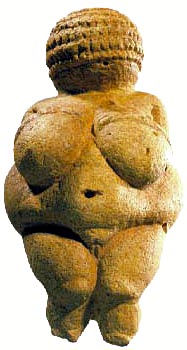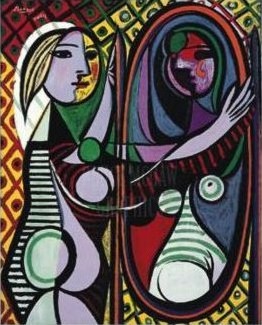- Lamphere, Louise et al. Situated Lives. New York:
Routledge. 1997
(read minimally the introduction and chapters by Rapp, Ginsburg, Comaroff, as well as one chapter at least in each of the sections of the book)
- recommended: each of these books represent a stage in the evolution of anthropological thinking on questions of gender. Do note that all these are very much part of a particular, though intellectually dominant at this time, tradition.
- Rosaldo, Michelle, and Louise Lamphere, eds. Woman, culture, and society. Stanford, CA: Stanford University Press. 1973. (particularly the chapters by Rosaldo, Ortner, Lamphere, Hoffer, Denich)
- Ortner, Sherry and Harriet Whitehead, eds. Sexual meanings: The cultural construction of gender and sexuality. New York: Cambridge University Press. 1981
- Abu-Lughod, Lila, ed.. Remaking women: Feminism and modernity in the Middle East. Princeton, NJ: Princeton University Press. 1998
These notes are the tenth in a series of fifteen lecture for my class Culture and Communication. This introduces a set of lectures on the most powerful critiques of structuralist thinking about cultural patterning and systematicity in interaction.
Gendering(s) |
To paraphrase Lévi-Strauss
Gender [culture] is neither simply juxtaposed to nor simply superposed over sex [life]. In a way, gender [culture] substitutes itself to sex [life], in another way gender [culture] uses and transforms sex [life] to realize a synthesis of a higher order. (1949)
and, to paraphrase Saussure, (p. 112)
The cultural fact, gender, can be pictured in its totality as a series of subdivisions marked of on both the indefinite plance of jumbled ideas about sexuality (A) and the equally vague plane of biological sexuality (B).Sex and gender:
Cultural possibilities and disabilities
in everyday life in general
and the (social) sciences in particular



Is the Venus de Milo the representation of a human female? Or the construction of a Greek(?), European(?), universal(?) woman? And what about this representation found in 1908 by the archaeologist Josef Szombathy near the town of Willendorf in Austria and now in the Naturhistorisches Museum, Vienna (dated from 30,000-25,000 BCE)? (for more see the site by Witcombe And this one by Picasso? note also that these represenations elide the question of age: when is a [wo]man? Pre/post puberty? Pre/post menopause or various other forms of aging?
How many sexes can there be anyway? How many genders?
And now to quote a famous poet (on the relation between the imaginary and the experiential):
my endeavours should be directed to persons and characters supernatural, or at least romantic, yet so as to transfer from our inward nature a human interest and a semblance of truth sufficient to procure for these shadows of imagination that willing suspension of disbelief for the moment, which constitutes poetic faith (Coleridge 1817, Chapter xiv)
Feminism as a speech act reconstituting the (social) scieces
new scholarship (political action)
Missed subject matter:
- Noticing that, until not so recently anymore, men were the subject of the human sciences on the unexamined idea that what was discovered studying male human beings also had to apply to female human beings
- possibly because of an overly straightforward use of the "psychic unity of mankind" principle.
- Moving researchers to studies of women (identified as the females of the species on the basis of sexual dimorphism)
- Margaret Mead's Male and Female (1949) and other anthropologists
- hint of this in Comaroff (p. 405)
- various early feminists
- The "discovery" of gender as a theoretical term:
sex + cultural elaboration = gender
- Note that, in linguistics, it was always accepted that gender is a convention, an artificial social construction, and that the relationship between a person or object and a gender is arbitrary in the Saussurian sense.
- grammatical "genders" in Indo-European languages:
- the three genders in latin (masculine, feminine, neuter)
- the two genders in french (loss of neuter) and the distribution of gender characteristics to all nouns in the language
- LA voiture ... elle -- "the car ... it.
- LE bateau ... il -- "the boat ... it" (or could it be "she"?
- the remnants of three genders in English ("he", "she", "it"); the gendering of some objects, particularly machines as "she." The continuing attempt at creating a fourth gender that would refer only to human beings as groups or impersonally ("he or she", "they") with no indexing of sexuality while maintaining sexual markers for individuals
- Stages in expanding the grammatical understanding of gender as arbitrary to the domain of culture, and particularly to the understanding of what might be called the secondary social markers of sexuality (e.g. "caring," "aggressivity," the association of particular occupations with particular sexes, etc.)
- Margaret Mead and the illustration that stereotypically "male" traits could be held by women and "female" traits by men.
- The lack of evidence that women were biologically incapable of any stereotypically male activities.
- The evidence that placing women in particular position (homemakers, nurses, teachers) was the result not only of undirected cultural evolution but also of specific political acts repeated over the years both at the local levels (girls and boys being tracked in families and schools) and at the national level (limitations on voting, etc.).
- the growing acceptance at the national political level (whether because of ideological shifts or because of economic transformations) that most forms of "gendering" was illegitimate (which is a different thing than arbitrary) leading both to
- The not so recent anymore (past forty years) flourishing of approaches to human life through gender as a prototypical instance of expanding what, for a long time, was a category required to make senses of languages into the broader area of culture.
- Bias in theorizing
- The sense that all this is
- partially a matter of collective action drifting outside the control of any political controls ("culture" in the more traditional understandings)
- partially something that can be controlled through critique, justification through appeal through first principles, and other forms of direct political action ("culture" through constituting speech).
- Examples from the (social) sciences
- chimpanzees: male pecking orders through symbolic violence (posturing, etc.) vs. female dominance through literal violence (infanticide) -- See Pusey, Williams, and Goodall (1997); Hrdy (1999)
- is the egg passive while the sperm in active, or is it the other way around? (see Gilbert's site, particularly the pages on fertilization
- Some work in anthropology
- a focus on cross-cultural variations in the positions of women (Rosaldo & Lamphere (1974), Ortner and Whitehead (1981) : M. Mead redux)
- The volume of essays by Lamphere et al. is an excellent compendium of the kind of work conducted by feminist social scientists mostly from anthropology and the competing field "cultural studies" that arises out of one version of cultural anthropology (through the works of Geertz).
This work proceeds in terms of a particular kind of modified social psychology joined with a particular form of socio-political analysis that is relatively distinct from earlier traditions in what it emphasizes, plays down, and bring together.
- The self as constructed implicitly through interaction(G.H. Mead) and also multiple (Derrida and desconstruction) and also explicitly affirmed through political affirmation (that is self-naming and associational patterns): one is not made "Chicana" through early enculturation but through specific public activities.
- Illustration of the objective conditions women face as they construct their public selves (Salzinger and Central American immigrant "maids" in the information age)
- a focus on the political work produced by all actors ("dominant" males and "resisting" females) to reproduce and transform their positions in an agonistic rather than cooperative feedback process
- the ambiguities of sexual identification: what is "sex" anyway. (see Beeman 1996)
- Various routes
- The reconstitution of sex as difference that makes a difference (either through biology or very early enculturation):
- Carol Gilligan critique of Kohlberg six stage theory of moral development
- Nel Noddings and caring
- The radical deconstruction of all sciences by the demonstration that they are all social (cultural) and that human reasoning cannot free itself from its grounding in particular genders (races, historical conditions, etc.) :
Second-wave feminists ... have expanded our view ... suggesting that we see theories as historically constructed and embedded in political, social, and cultural contexts. (Lamphere et al. 1997, p. 3)
- In the development of gender studies in anthropology and related disciplines, it may be the last possibility that has been most determinedly explored, eventually producing radical critiques of the possibility of knowledge (and thereby ethnography). This aligned feminist studies with post-modern deconstruction, until it became clear that the implicit relativism (nihilism) in these trends was fundamentally inimical to the political (moral, ethical) agenda that had first triggered feminist scholarship.
- One way to clarify the evolution of the relationship between cultural positioning and knowledge is in terms of Plato's metaphor of the cave where human beings are locked, unable to see the objects except as shadows on the wall. I also imagine that the light plays through one, or many, lenses. The scientific task, in this perspective, is to reconstruct a model of the object by triangulating the play of the shadow, the direction of the light, etc. Given this analogy several problems can arise:
- while every human beings can potentially see equally well (they all see through the same lense), or badly, certain positions prevent easier access
- men have been handicapped by various matters, women scholars can now correct some improper generalizations
- not all human beings can see equally well, or they see equally well, but through different lenses, thus the knowledge each attain will remain incommensurate: they will never be able to agree on what it is that they are seeing.
- men and women are fundamentally different, they have different ways of knowing, and this produce different sciences
- the lenses are really mirrors reflecting what is happening in the cave and all knowledge is grounded in the social relationships among those who look.
- there is fundamentally no way to produce a science that is not the product of gender (though how this would work is itself unknowable)
- there are no mirrors or lenses, no cave, no light, and no objects, it is all a personal (individual, "in the head") construction. This can easily be transformed into an idealist or nihilistic approach that is radically inimical to any kind of systematic conversation.
- by implication gender itself is not an analytic category but rather a political ploy, and thus an illusion: feminism has thereby radically deconstructed itself.
- The reconstitution of the (interactional/historical) unity of (hu)mankind
- with "gender" as an analytic category:
- the multiplication of genders (types of human beings through the transformation of sex characteristics)
- LGTBQIA(A) (New York Times, January 2013)
- The 58 Facebook possibilities (ABC News, February 14, 2014)
- the patterns of gender identifications (Benedict, Mead, early Geertz if he had written about gender)
- the interactional reconstitution of the gender differentiation through conversation and systemic relationships
- dialogical drift (Bakhtin)
- without "gender" given the necessary critique of the category
- toward a theory of human segregation through the playful/fateful manipulation of possibilities within the body (gender = race = ethnic background = ...) through a reconsideration of Lévi-Strauss Savage Mind
- In general: the necessity of arbitrariness (poetry? play?)
- what social science has been saying about human activity in social fields (constraints, possibilities, strategies, drama, etc.) it has been saying about women as well as men (rather obvious theoretically, but was sometimes not so easy to implement)
- This, of course, is a reaffirmation of the rationalistic "modern" strictures about what anthropologists called the "psychic unity of mankind": all human beings are the same in and through their differences.
- It is also a reaffirmation of the old boasian insight that making knowledge public through language necessarily limits what can be known as known (Martin).
- social systems or cultures, however constraining, are also relatively open to exploitation by all persons, particularly around the areas of contradiction within the system (i.e. each culture has particular places where it is more vulnerable to cooptation, and possibly change)
- social fields, to the extent that they place human beings in different positions, thereby gives them different interests, as well as different tools (weapons, etc.) in their struggle against those placed in other positions.
- Given a theory of internalization, this negates the principle of the "psychic unity of mankind." People in different positions, with different experiences, would BE different.
- taken seriously, this requires renewed interest in "objective" analyses of the structures of the fields.
- Systematic discussion must come back to the basic intuition, that is that sex, everywhere is culturally constructed in ways that are not directly predictable from the biological nature of sexuality, but does not ignore it either (see the initial discussion in this class of Lévi-Strauss's contribution to the theory of culture). Thus human sex, everywhere is "gender" constructed contrastively among the possibilities that cultural elaboration has built historically. Thus "gender" can never be explained by reference to a substance ("women as different by men because they are women, biologically") but always in reference to what others make of them in a particular field, that is--paradoxically perhaps, and controversially certainly--men (just like men are made in reference to women, and all other possible genders).
- and the necessity of sex: no sex no gender
- the recent interest in "embodiment": we are, also, bodies.
Some questions
(in the context of this course)
- Strictly speaking, is the Venus of Milo female?
- Under what conditions might the preceding question be meaningless?
- If the Venus of Milo is not female what is (she) (it)?
- Under what conditions would it cease to be necessary to analyze human relations in terms of gender?
- Does a cultural analysis negate all biological analysis of sexuality?